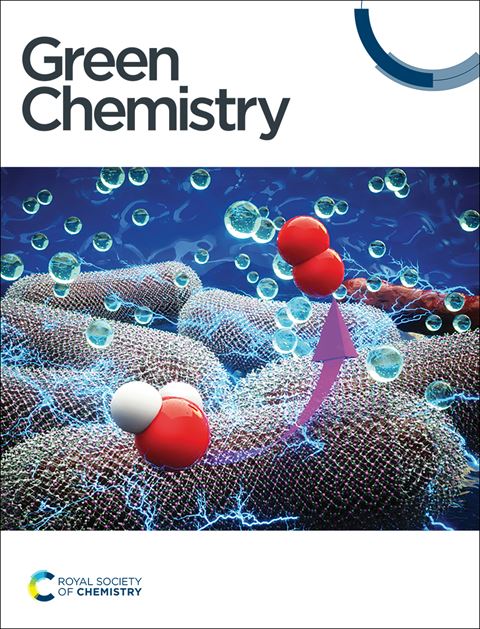3D printable lignin-caprolactone material†
IF 9.3
1区 化学
Q1 CHEMISTRY, MULTIDISCIPLINARY
引用次数: 0
Abstract
The use of lignin in three-dimensional (3D) printing materials has been considered a viable strategy to generate sustainable 3D printing objects. However, complex molecular structures, high viscosity, and charring of lignin impair its 3D printability. This study investigated the synthesis of lignin-caprolactone polymer and its fused deposition modeling (FDM)-3D printing performance. Lignin-caprolactone polymerization was carried out with ethanol-soluble fractionated birch alkali lignin (LE) and caprolactone (CL). Results showed that ethanol fractionation reduced lignin's molecular weight from 22 870 to 3827 g mol−1 and increased its hydroxyl group concentration. The melt temperature, viscosity, and polymerization degree were considered in the Box-Behnken surface approach to obtain lignin-caprolactone with the best results. Compared to unfractionated lignin caprolactone (LPO), fractionated lignin-caprolactone polymer (LEPO) had a 10.9% higher grafting ratio, 69.43% rise in melt temperature (Tm), and 85.71% increase in glass transition temperature. The melt rheological investigation showed that LEPO's lower viscosity (160.9 Pa s) and shear-thinning behavior than those of LPO made it more suitable for the 3D printing application. The 15 °C delay in G′ and G′′ crossover points of LEPO compared to LPO improved 3D printing adhesion layers. Furthermore, LEPO exhibited superior mechanical characteristics and a greater water contact angle (92°) than LPO. The reduction in molecular weight distribution of lignin (due to ethanol fractionation) prior to copolymerization facilitated the production of a 3D-printable polymer containing 75% lignin. By tailoring the melt and viscosity parameters of the lignin-caprolactone copolymer, the lignin-copolymer exhibited improved 3D printing performance, which offers advantages over lignin composite 3D printing.

求助全文
约1分钟内获得全文
求助全文
来源期刊

Green Chemistry
化学-化学综合
CiteScore
16.10
自引率
7.10%
发文量
677
审稿时长
1.4 months
期刊介绍:
Green Chemistry is a journal that provides a unique forum for the publication of innovative research on the development of alternative green and sustainable technologies. The scope of Green Chemistry is based on the definition proposed by Anastas and Warner (Green Chemistry: Theory and Practice, P T Anastas and J C Warner, Oxford University Press, Oxford, 1998), which defines green chemistry as the utilisation of a set of principles that reduces or eliminates the use or generation of hazardous substances in the design, manufacture and application of chemical products. Green Chemistry aims to reduce the environmental impact of the chemical enterprise by developing a technology base that is inherently non-toxic to living things and the environment. The journal welcomes submissions on all aspects of research relating to this endeavor and publishes original and significant cutting-edge research that is likely to be of wide general appeal. For a work to be published, it must present a significant advance in green chemistry, including a comparison with existing methods and a demonstration of advantages over those methods.
 求助内容:
求助内容: 应助结果提醒方式:
应助结果提醒方式:


